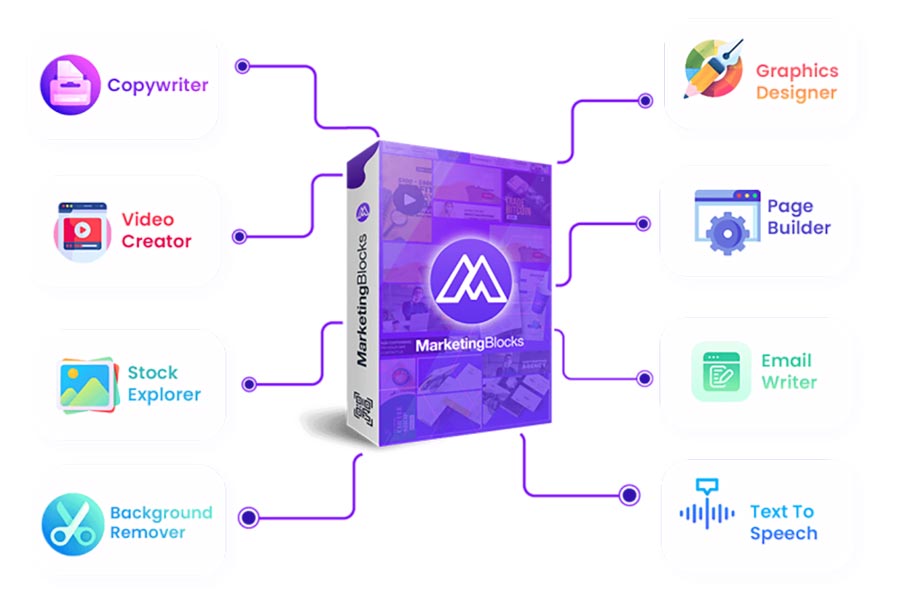Supercharge Your Business: Mastering Cross-Channel Marketing Magic!

Embracing cross-channel marketing is now crucial for businesses aiming to reach and engage their target audience effectively. Integrating online and offline marketing efforts enables companies to craft a unified and seamless customer experience, leveraging the strengths of both channels for maximum marketing impact.
Understanding Cross-Channel Marketing
Cross-channel marketing uses multiple channels to deliver a consistent and synchronised message to the target audience. Integrating online and offline marketing efforts to create a seamless customer experience across various touchpoints. By leveraging the strengths of each channel, businesses can effectively engage with customers throughout their buying journey.
Benefits of Cross-Channel Marketing
Expanded Reach: Integrating online and offline marketing efforts allows businesses to reach a wider audience. While online channels provide global reach and accessibility, offline channels such as print ads, billboards, or direct mail can help reach a local or niche audience.
Enhanced Brand Awareness: Consistent messaging across different channels helps reinforce brand awareness. Whether a customer sees an online ad, receives a direct mail piece, or visits a physical store, a cohesive brand experience strengthens brand recognition and recall. This consistency builds trust and familiarity, which is crucial for developing a solid brand presence.
Improved Customer Engagement: Cross-channel marketing enables businesses to engage customers in multiple ways. For example, customers can learn about a product online, visit a physical store to try it out and make a purchase online. This omnichannel experience enhances customer engagement and increases the chances of conversion. Businesses can cater to different customer preferences and behaviours by providing various touchpoints for interaction.
Data-driven Insights: Integrating online and offline efforts helps businesses gather valuable customer data. By analysing this data, companies can gain insights into customer behaviour, preferences, and purchasing patterns. This information can be used to refine marketing strategies and optimise campaigns for better results. For instance, tracking customer interactions across channels can reveal which touchpoints are most effective in driving conversions, allowing businesses to allocate resources accordingly.
Increased Conversion Rates: Cross-channel marketing can lead to higher conversion rates. Customers interacting with a brand through multiple channels are more likely to convert into paying customers. By providing a seamless and convenient experience, businesses can reduce friction in the buying process and drive conversions. For example, offering the option to purchase online or in-store gives customers the flexibility to choose their preferred method, improving the likelihood of a sale.
Strategies for Integrating Online and Offline Marketing Efforts
Consistent Branding: Maintaining consistent branding across all channels is crucial for effective cross-channel marketing. This includes using consistent visual elements, messaging, and tone of voice. Whether it’s a website, social media platform, or a physical store, customers should have a unified experience that reflects the brand’s identity. Consistent branding builds trust and recognition, making it easier for customers to connect with the brand across different channels.
Personalisation: Personalising marketing messages based on customer data can significantly enhance the cross-channel experience. Utilise customer data to tailor offers, recommendations, and communications to each individual’s preferences and interests. This can be achieved through email marketing, personalised website content, or targeted direct mail campaigns. By delivering relevant and personalised content, businesses can increase customer engagement and foster a stronger connection with their audience.
Seamless Customer Journey: Integrating online and offline touchpoints ensures a seamless customer journey. For instance, customers should be able to start an online purchase and complete it in-store, or vice versa. Implement technologies like QR codes or unique promo codes that enable customers to transition effortlessly between online and offline channels. By removing barriers and providing a smooth experience, businesses can optimise the customer journey and increase the likelihood of conversion.
Tracking and Measurement: Implement tracking mechanisms to measure the effectiveness of each channel in your cross-channel marketing strategy. Utilise analytics tools to gather data on customer interactions, conversions, and engagement across online and offline channels. This data will help identify which channels drive the most significant results and optimise marketing efforts accordingly. By continuously analysing and measuring the performance of each channel, businesses can make data-driven decisions and refine their strategies for better outcomes.
Integrated Campaigns: Create integrated marketing campaigns that combine online and offline elements to deliver a cohesive message. For example, a campaign could involve promoting a limited-time offer through online ads, social media, and direct mail. This approach reinforces brand messaging and encourages customers to take action through their preferred channels. By integrating various channels into a single campaign, businesses can amplify their message and increase the chances of customer engagement and conversion.
Examples of Cross-Channel Marketing
To illustrate the power of cross-channel marketing, let’s consider a hypothetical example. ABC Electronics is a consumer electronics retailer looking to increase sales and enhance customer engagement.
Online to Offline: ABC Electronics launches an advertising campaign promoting an exclusive in-store event. The ad directs customers to a landing page to sign up for the event and receive a personalised coupon. This encourages customers to visit the physical store to take advantage of the offer. By seamlessly transitioning customers from online to offline, ABC Electronics creates an integrated experience that drives foot traffic and boosts sales.
Offline to Online: ABC Electronics includes QR codes in its print ads and in-store displays. Customers can scan these codes with their smartphones and be directed to a dedicated webpage with additional product information, reviews, and a convenient online purchase option. This allows customers who prefer online shopping to purchase without visiting the physical store. By bridging the gap between offline and online, ABC Electronics caters to different customer preferences and expands its potential customer base.
In-store Experience: ABC Electronics creates an interactive and engaging in-store experience with touchscreen displays. These displays give customers access to online product reviews, comparisons, and recommendations. Customers can sign up for the store’s loyalty program through these displays, enabling future personalised marketing campaigns. By integrating online content within the physical store, ABC Electronics enhances the in-store experience and encourages further engagement with the brand.
By implementing these cross-channel strategies, ABC Electronics creates a seamless customer experience that engages online and offline customers. This approach helps drive sales and build long-term customer loyalty.
Conclusion
When done effectively, cross-channel marketing allows businesses to leverage the strengths of online and offline channels to create a seamless and cohesive customer experience. By integrating marketing efforts across various touchpoints, businesses can expand their reach, enhance brand awareness, and increase customer engagement. Consistent branding, personalisation, and a seamless customer journey are essential to cross-channel marketing. Businesses can drive conversions and achieve their marketing goals by measuring results and optimising campaigns based on data-driven insights.
Check out our other related posts if you enjoyed this one.
- Influence: The Psychology of Persuasion by Robert B. Cialdini – A Word Marketing Book Summary
- Building Trust: Brand Awareness & Reputation
- Unlocking Success: Data-Driven Targeted Advertising
- The AI Revolution: Transforming Marketing & Advertising
- Introducing Our New and Improved Dewalist Marketplace Design
- Ad Ethics: Balancing Persuasion with Responsibility
- Email Showdown: Mandrill vs Mailchimp Features
- The Future of Digital Out-of-Home (DOOH) Advertising
- Revolutionising Marketing with Virtual & Augmented Reality
- Small Business Local SEO: Unleash the Power to Boost Growth
If you enjoyed this blog post, subscribe for updates and stay tuned for our latest insights.
Help your friends and colleagues stay informed about the newest insights on business, marketing, finance, lifestyle, and society by sharing our blog content through Facebook, Twitter, Pinterest, LinkedIn, email, or WhatsApp links below. We can create a knowledge-sharing community and empower one another to accomplish and experience our objectives.
FAQ
What is cross-channel marketing?
Cross-channel marketing refers to the practice of utilising multiple marketing channels, both online and offline, to deliver a consistent and synchronised message to the target audience. Businesses can create a seamless customer experience across various touchpoints by integrating online and offline marketing efforts.
What are the benefits of cross-channel marketing?
Expanded Reach: Integrating online and offline marketing efforts allows businesses to reach a wider audience.
Enhanced Brand Awareness: Consistent messaging across different channels helps reinforce brand awareness.
Improved Customer Engagement: Cross-channel marketing enables businesses to engage customers in multiple ways.
Data-driven Insights: Integrating online and offline efforts helps businesses gather valuable customer data.
Increased Conversion Rates: Cross-channel marketing can lead to higher conversion rates.
What are the strategies for integrating online and offline marketing efforts?
Consistent Branding: Maintaining consistent branding across all channels is crucial for effective cross-channel marketing.
Personalisation: Personalising marketing messages based on customer data can significantly enhance the cross-channel experience.
Seamless Customer Journey: Integrating online and offline touchpoints ensures a seamless customer journey.
Tracking and Measurement: Implement tracking mechanisms to measure the effectiveness of each channel in your cross-channel marketing strategy.
Integrated Campaigns: Create integrated marketing campaigns that combine online and offline elements to deliver a cohesive message.
Can you provide an example of cross-channel marketing?
ABC Electronics, a hypothetical example of a consumer electronics retailer, implements cross-channel marketing strategies such as online-to-offline promotions, offline-to-online QR codes, and in-store interactive displays. These strategies create a seamless customer experience that engages online and offline customers, driving sales and building long-term customer loyalty.
Credits
Featured photo by Campaign Creators on Unsplash.









